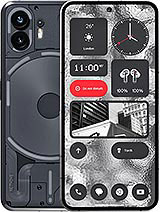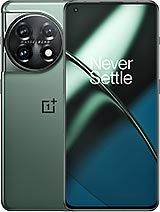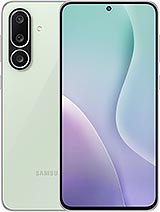Nothing Phone (2) vs. OnePlus 11

There was once a time not long ago when OnePlus was a small underdog trying to break through in the smartphone realm. It successfully disrupted the market with competitive products and grew from there. Well, not without the help of the BBK corporation, but nevertheless, it is an underdog success story.
Nowadays, Carl Pei, one of the co-founders of OnePlus, is trying to repeat his success in the realm by developing the Nothing brand. After the relative success of the original Nothing Phone (1), the company is now pushing a second model onto markets - the Nothing Phone (2).
The latter is a notably more premium offer than the original. So much so that it can now rub shoulders successfully with other top-shelf devices. It's also one of the few new entrants to the US market, where it's priced similarly to the OnePlus 11. Each comes with its own set of pros and cons, which are worth going over.
You can compare the complete specs sheets or directly continue with our editor's assessment in the text further down below.
Table of Contents:
Size comparison
The two phones are very similar in size and weight. Both are technically rocking identically-sized 6.7-inch, 20:9 displays, but these differ significantly in shape. Namely, the panel on the OnePlus 11 is curved, whereas the one on the Nothing Phone (2) is flat. This allows the OnePlus 11 to have a higher screen-to-body ratio, at around 89.7%, compared to about 87.2% on the Nothing Phone (2) and slimmer display bezels.
Whether or not that translates to a more comfortable and ergonomic design is kind of a personal preference. The OnePlus 11 is a lot rounder on all sides, making for a comfortable in-hand feel. In contrast, the Nothing Phone (2) is a lot boxier with a distinctive iPhone-inspired look and silhouette.

In terms of build and materials, the two phones are similar yet again. Both boast a premium bill of materials with glass on the back and front and an aluminum middle frame. The OnePlus 11 has a clear edge in this category, though, since it offers a higher IP64 ingress protection rating compared to the Nothing Phone (2)'s IP54.
The OnePlus 11 also boasts Gorilla Glass Victus on the font and Gorilla Glass 5 on the back, which is a bit more confidence-inspiring than the unnamed version of Gorilla Glass on the Nothing Phone (2).
Display comparison
As we already mentioned, the two phones have technically identical display diagonal and aspect ratio. However, the panels themselves differ significantly in practice since the one on the OnePlus 11 is curved, whereas the Nothing Phone (2) has a flat display.
Let's talk about other similarities. Both displays offer 10-bit color and hardware support for HDR10+ video. The OnePlus has the advantage here with Dolby Vision certification as well.
On the flip side, the Nothing Phone (2) has an advantage in terms of max display brightness, according to our own testing. A brighter display is not only more comfortable to use under harsh lighting conditions (not that both phones don't have enough to have that covered) but also goes a long way in helping towards a good HDR experience.
Speaking of a good viewing experience, we were left very impressed by the color accuracy of both phones. You can expect near perfect sRGB and DCI-P3 colors from them.
While the two displays are a toss-up in the color department, there is no competition when it comes to resolution. The OnePlus 11 clearly has the advantage with its QHD panel with 1440 x 3216 pixels. That results in an amazingly sharp pixel density of around 525 ppi. Still, it's not like the Nothing Phone (2) isn't perfectly sharp either, with its FullHD+ 1080 x 2412 pixels and 394 ppi.
Both phones support a 120Hz refresh rate. However, there are some notable hardware and software differences in how each handles the high refresh rate. It is great that both phones use LTPO technology, allowing them to switch refresh rates more dynamically and granularly. That being said, using its superior LTPO3 tech, the OnePlus 11 has the Nothing Phone (2) beat with a much more dynamic refresh rate switching. That being said, the OnePlus 11 can have quite erratic refresh rate switching in practice. We mostly prefer the consistency offered by the Nothing Phone (2) instead, even if its panel itself is not as advanced tech-wise.
Battery life
The two phones have a similar battery capacity with a slight edge for the OnePlus 11 at 5,000 mAh, compared to 4,700 mAh inside the Nothing Phone (2). This difference in capacity translates to a rather expected and equally small difference in actual battery endurance.
The OnePlus 11 technically has the Nothing Phone (2) beat in the battery department, though really not by much, scoring 108 hours of endurance, compared to 103 hours on the Nothing Phone (2).
Charging speed
The two phones are pretty different in terms of charging support. The OnePlus 11 definitely has the edge when it comes to raw charging speed. Its international version is capable of up to 100W PD charging, whereas the US one is capped at 80W. In our testing, it did remarkably well, taking just 22 minutes to go from zero to a hundred percent battery. It is also worth noting that the OnePlus 11 comes with the appropriate 100W charger bundled in the retail box.
The Nothing Phone (2) might only be capable of 45W PD charging in comparison, but it is still a relatively quick-charging device in the grand scheme of things. Thirty minutes on an appropriate charger took the phone from zero to 62%, and a full charge took just over an hour in our testing. Unfortunately, the Nothing Phone (2) does not come with a bundled charger; you must purchase one separately.
On a more positive note, the Nothing Phone (2) arguably has the more versatile charging setup, including support for up to 15W wireless charging, which the OnePlus 11 can't do, as well as 5W reverse charging.
Speaker test
Both phones have a stereo speaker setup. Both also employ a hybrid stereo setup with an amplified front-facing earpiece doubling as the second channel. Both the Nothing Phone (2) and OnePlus 11 scored a "VERY GOOD" loudness score in our testing, with the Nothing Phone (2) coming out slightly ahead, but not by much.
Both devices have a pretty clean audio output, primarily focused on good mids, as expected. Neither phone disappointed in terms of highs and lows either. We would say that both phones are comparable in the loudspeaker department.
In case you were wondering, neither phone has a 3.5mm audio jack.
Performance
Both phones are based on flagship chipsets, but the Nothing Phone (2) is rocking the slightly older Snapdragon 8+ Gen 1 chipset. It is still a flagship chip, which is what a lot of fans of the original Nothing Phone (1) wanted to see from the company. The Snapdragon 8 + Gen 1 on the Nothing Phone (2) is a toned-down version of the original chipset with lower clock speeds on all three core clusters. The main Cortex-X2 core is clocked at 3.0 GHz (instead of 3.2 GHz), the 3x Cortex-A710 cluster runs at 2.5 GHz (instead of 2.75 GHz), and the energy-efficient 4x Cortex-A510 cores are ticking at 1.8 GHz (instead of 2.0 GHz). This should bring down the overall energy demand. The chipset is still based on TSMC's 4nm manufacturing node and relies on the Adreno 730 GPU for graphically intensive tasks.
The OnePlus 11 is based on Qualcomm's flagship chip of 2023 - the Snapdragon 8 Gen 2 (4 nm). It is a notably more powerful chip than the Snapdragon 8+ Gen 1, even on paper, with a CPU config consisting of a 3.2 GHz Cortex-X3 prime core, two 2.8 GHz Cortex-A715 ones, two 2.8 GHz Cortex-A710 ones and three 2.0 GHz Cortex-A510 ones. The bundled GPU is an Adreno 740. All of this is paired with fast LPDDR5X RAM and UFS 4.0 storage (except in the base 128GB variant, which is UFS 3.1).
You can get both phones with as little as 128GB of storage and 8GB of RAM. The Nothing Phone (2) ups the RAM to 12GB in its higher storage tiers, whereas the OnePlus 11 can be found with as much as 16GB of RAM.
We would probably go for the 256GB variants of both devices. Still, there are notable differences between the two, namely that the OnePlus 11 uses faster UFS 4.0 storage compared to the UFS 3.1 on the Nothing Phone (2). It is worth noting that neither device has expandable storage, so get the amount you need onboard.
As expected, the OnePlus 11 is the notably more powerful device out of the two. That being said, the Nothing Phone (2) is definitely not strapped for power. Even though it is downclocked and clearly optimized for efficiency first, it still packs enough punch to easily chew through everyday tasks. Gaming is also not an issue for it, though the Adreno 740 inside the OnePlus 11 is significantly more powerful than the Adreno 730 in the Nothing Phone (2).
Camera comparison
Both phones have pretty potent camera setups, with a 50MP camera as the primary shooter.
Let's start with Nothing Phone (2) first. Its main camera is based on a Sony IMX890 1/1.56" sensor with 1.0µm pixels, coupled with a 23mm f/1.88 optically stabilized lens. The camera supports PDAF and can capture video at up to 4K@60fps. Another 50MP camera complements it - an ultrawide that supports autofocus and can focus as close as 4cm away. On the front, we find a 32MP with a fixed focus.
The OnePlus 11 arguably has the more versatile camera setup out of the two phones. The main camera uses the well-known 50MP Sony IMX890, 1/1.56" sensor paired with an optically stabilized 24mm lens and wide f/1.8 aperture. It can do up to 8K@24fps video capture. The ultrawide shooter uses a 48MP sensor and autofocus support to allow for close-ups and macro stills. Then there is also a dedicated 32MP, 2x telephoto camera. OnePlus markets this as a portrait-centric camera. The selfie cam is a 16MP unit with a fixed focus.
To sum up, both phones use the same Sony IMX890 50MP main camera and very similar ultrawides with autofocus for macro shots. The OnePlus 11 does offer one extra telephoto camera, whereas the Nothing Phone (2) has a higher-resolution selfie.
Both phones capture great daylight photos with good detail and colors.



Nothing Phone (2): 0.6x • 1x • 2x
More samples and a detailed analysis can be found in our Nothing Phone (2) review.
More samples and a detailed analysis can be found in our OnePlus 11 review.
Both phones offer very competent 2x zoom shots. The OnePlus 11 clearly has the edge here with its optical zoom camera. Even so, the 2x shots taken with the main camera on the Nothing Phone (2) hold their own quite well. We can see they aren't a mere crop and upscale but that they probably come from the center of the camera's 50MP full-resolution output.
Despite the disparity in selfie resolution, both phones offer competitive selfies too.
Both phones also manage to shine nicely in low-light capture, as expected.


Nothing Phone (2): low-light • night mode


OnePlus 11: low-light • night mode
All in all, neither phone will disappoint in the camera department, as both rock solid camera setups, but the OnePlus 11 arguably has a slight edge.
Here's a glimpse of how the Nothing Phone (2)'s main camera compares in image quality to the OnePlus 11's in our Image compare tool.
And here's how the Nothing Phone (2)'s main camera compares in video quality to the OnePlus 11's in our Video compare tool.
Verdict
Looking at the two devices side by side, it is easy to assume that the OnePlus 11 is the better one, which might even be true from a purely hardware standpoint. The OnePlus 11, however, is not necessarily the better value proposition out of the pair. After all, it is selling for slightly more than the Nothing Phone (2) on average. At the time of writing, the MSRPs are around $670 for a 256GB + 16GB unit in the US for the Nothing Phone (2) and $650 for the OnePlus 11 (256GB + 16GB). In the EU, you are looking at a much bigger difference at around €660 for the same Nothing Phone (2) and €900 for the OnePlus 11. UK pricing isn't much different - £629 for the Nothing Phone (2) and £800 for the OnePlus 11.
Plus, there is a lot to like about the Nothing Phone (2). Perhaps you are a fan of its more traditional iPhone-like design, complete with a flat display. That display, by the way, gets very bright, even more so than the one on the OnePlus 11. Wireless charging support is also a nice-to-have.
Other than that, however, the OnePlus 11 comes out on top. It has better IP64 ingress protection, higher display resolution, and better HDR and HRR handling. Notably faster charging and better all-around performance. Its camera setup also includes a dedicated 2x zoom camera, giving it a slightly better versatility than the Nothing Phone (2).
Still, be sure to tell us what you think in the comments. There may be more reasons to prefer the Nothing Phone (2), which we did not consider. Which device is your personal winner out of the pair?
- The lighter body.
- The brighter display.
- The wireless charging support.
- The more affordable price in Europe.
Get the Nothing Phone (2) for:
Related
Reader comments
- justasmile
- 10 Nov 2023
- vjq
Not true bro. I actually like the haptic feedback of the phone 2 I am currently using.
- justasmile
- 10 Nov 2023
- vjq
Have you even realised that the extra costs are from the software itself too?















 Samsung
Samsung Xiaomi
Xiaomi Sony
Sony Samsung
Samsung Samsung
Samsung

